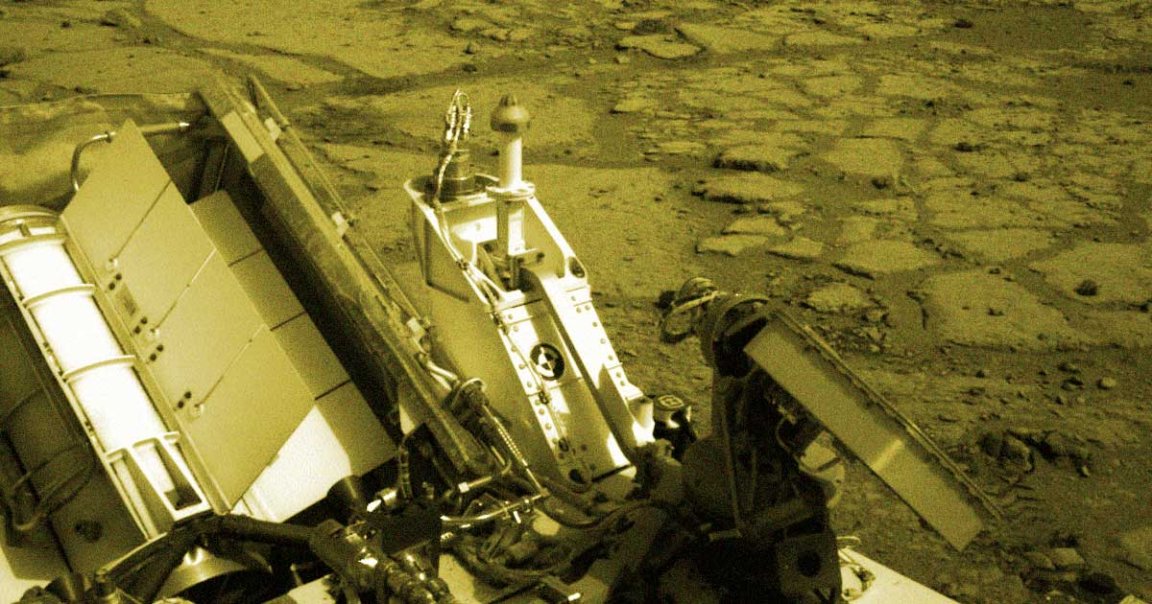
While examining eight-year-old data from NASA’s Curiosity Mars rover, scientists have made a tantalizing new discovery: the “total organic carbon,” a key ingredient of life, is surprisingly high in the Martian rocks the rover was scanning.
While the organic carbon may have originated from non-living sources, including meteorites and volcanoes, the discovery does lend modest new support to the theory that Mars may have been teeming with life billions of years ago, with an atmosphere allowing for the presence of rivers and entire oceans.
“Total organic carbon is one of several measurements [or indices] that help us understand how much material is available as feedstock for prebiotic chemistry and potentially biology,” said Jennifer Stern of NASA’s Goddard Space Flight Center and lead author of a new paper published in the Proceedings of the National Academy of Sciences, in a statement.
In fact, the carbon levels were comparable to some parts of Earth, albeit desolate ones.
“We found at least 200 to 273 parts per million of organic carbon,” Stern added. “This is comparable to or even more than the amount found in rocks in very low-life places on Earth, such as parts of the Atacama Desert in South America, and more than has been detected in Mars meteorites.”
Curiosity used its Sample Analysis at Mars (SAM) instrument back in 2014, inside of which it baked powdered rock samples, 3.5 billion-year-old mudstone, at high temperatures. The process turned some of the carbon into CO2, which allowed Curiosity to measure carbon isotope ratios, giving scientists insight into the original source of the material.
The samples were taken inside the Gale crater, a site believed to be an ancient Martian lake.
“Basically, this location would have offered a habitable environment for life, if it ever was present,” said Stern in the statement.
It’s a fascinating discovery that could have notable consequences for our understanding of ancient life on the Red Planet, but that doesn’t mean we should get ahead of ourselves.
According to Stern, the likelier scenario is still that the total organic carbon was the result of other non-living processes.
“While biology cannot be completely ruled out, isotopes cannot really be used to support a biological origin for this carbon, either, because the range overlaps with igneous (volcanic) carbon and meteoritic organic material, which are most likely to be the source of this organic carbon,” she concluded.
READ MORE: NASA’s Curiosity Takes Inventory of Key Life Ingredient on Mars [NASA]
More on Curiosity: NASA Rover Spots Extremely Weird Spikes on Mars